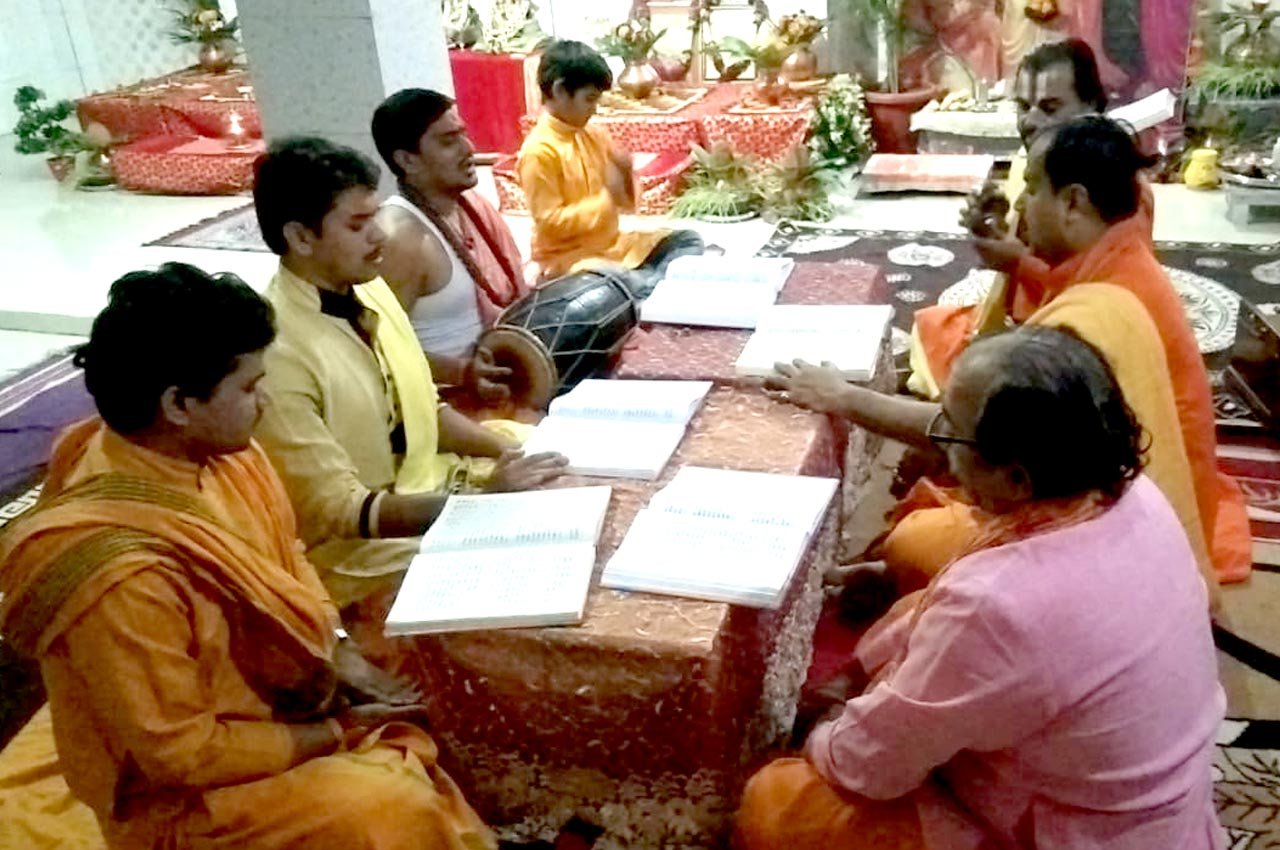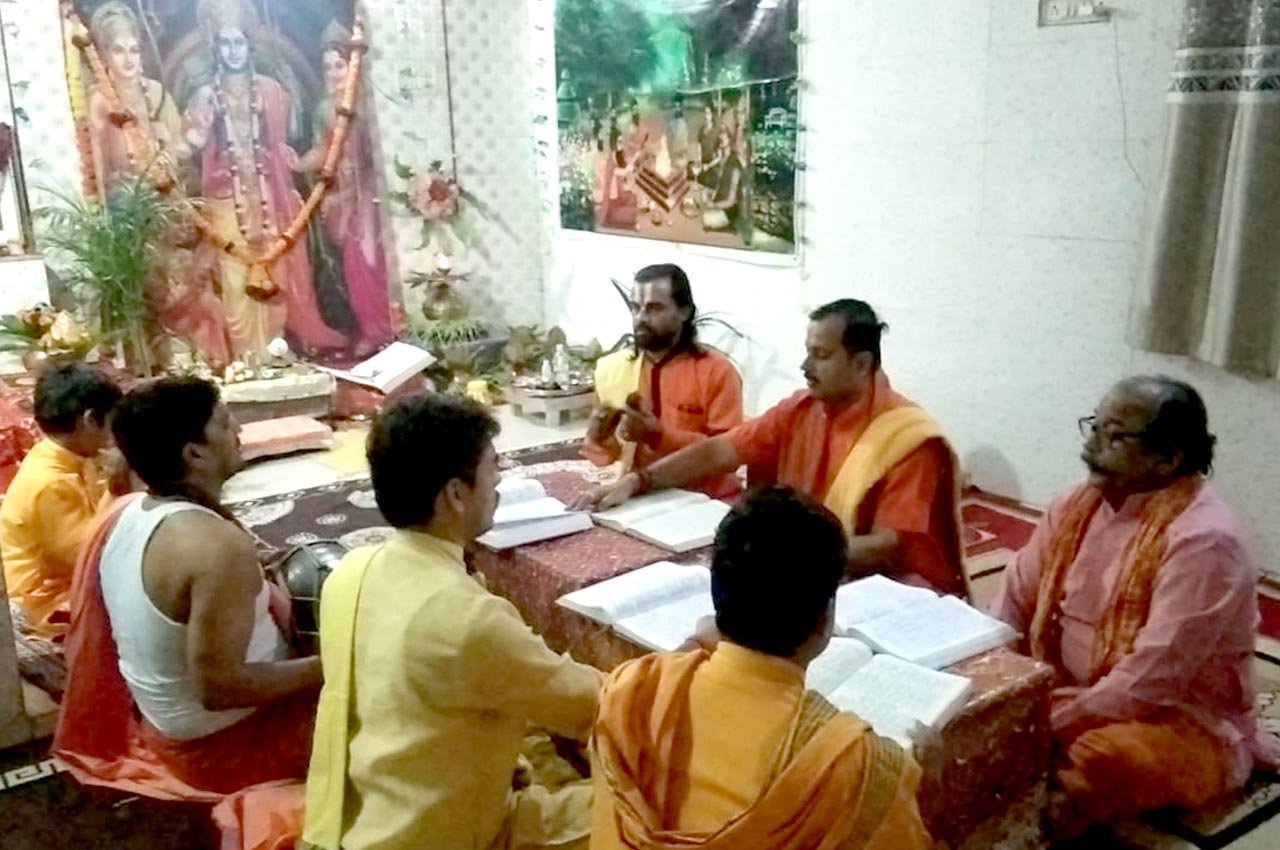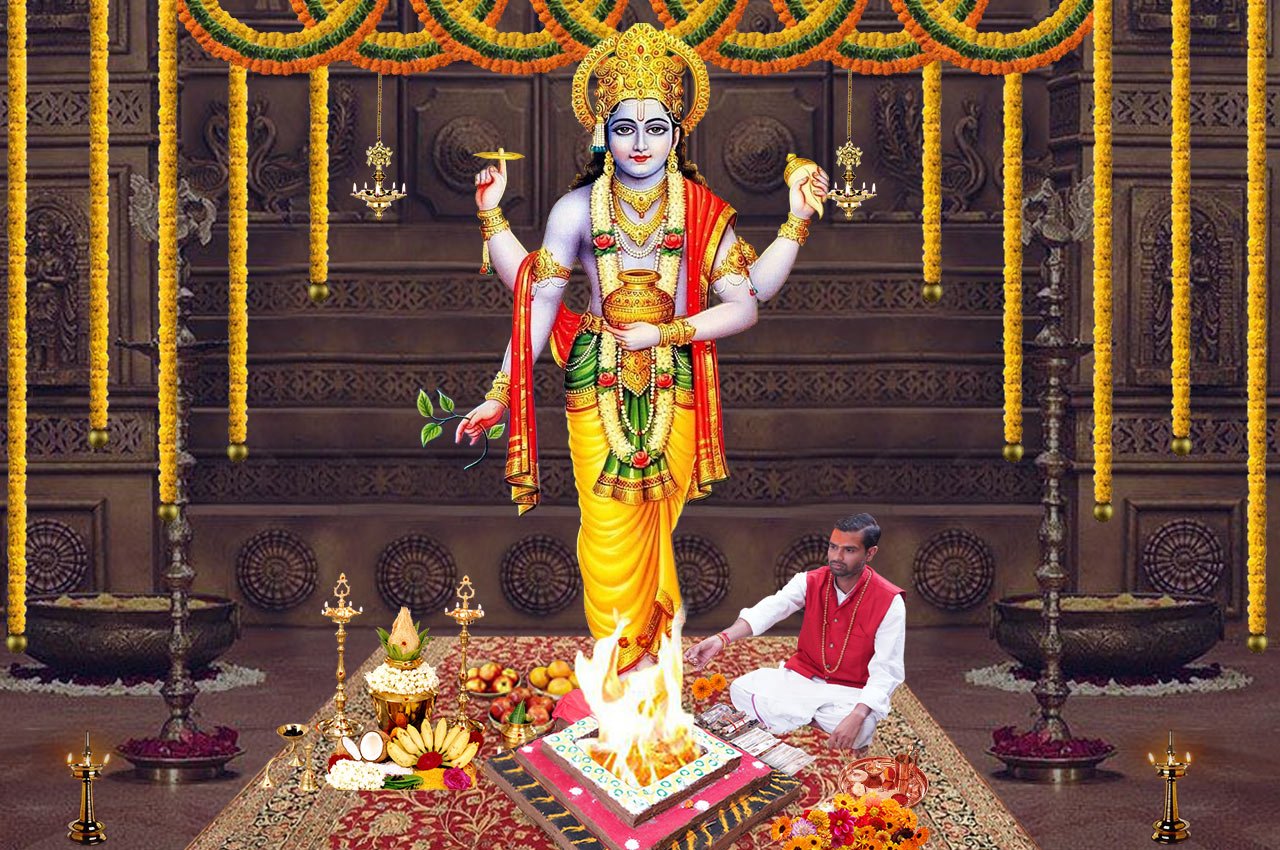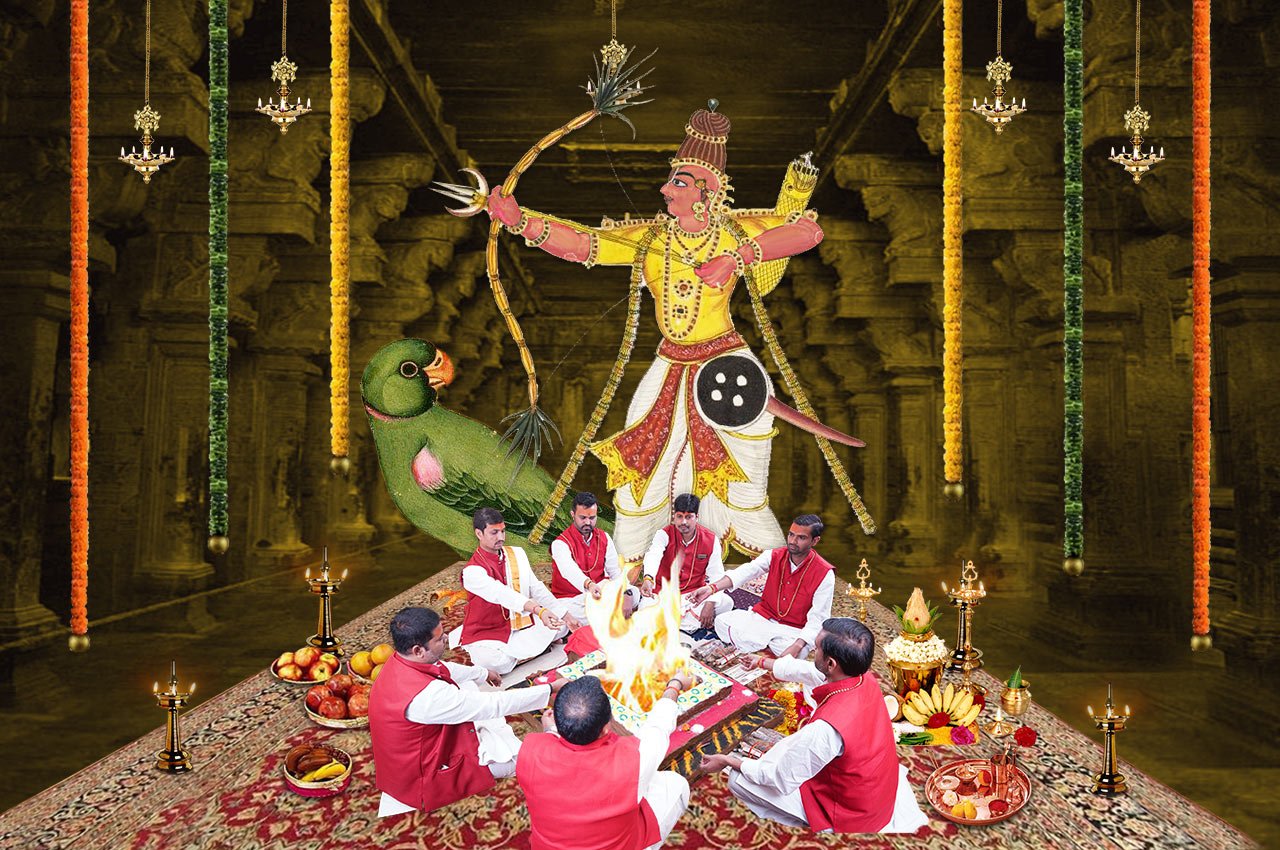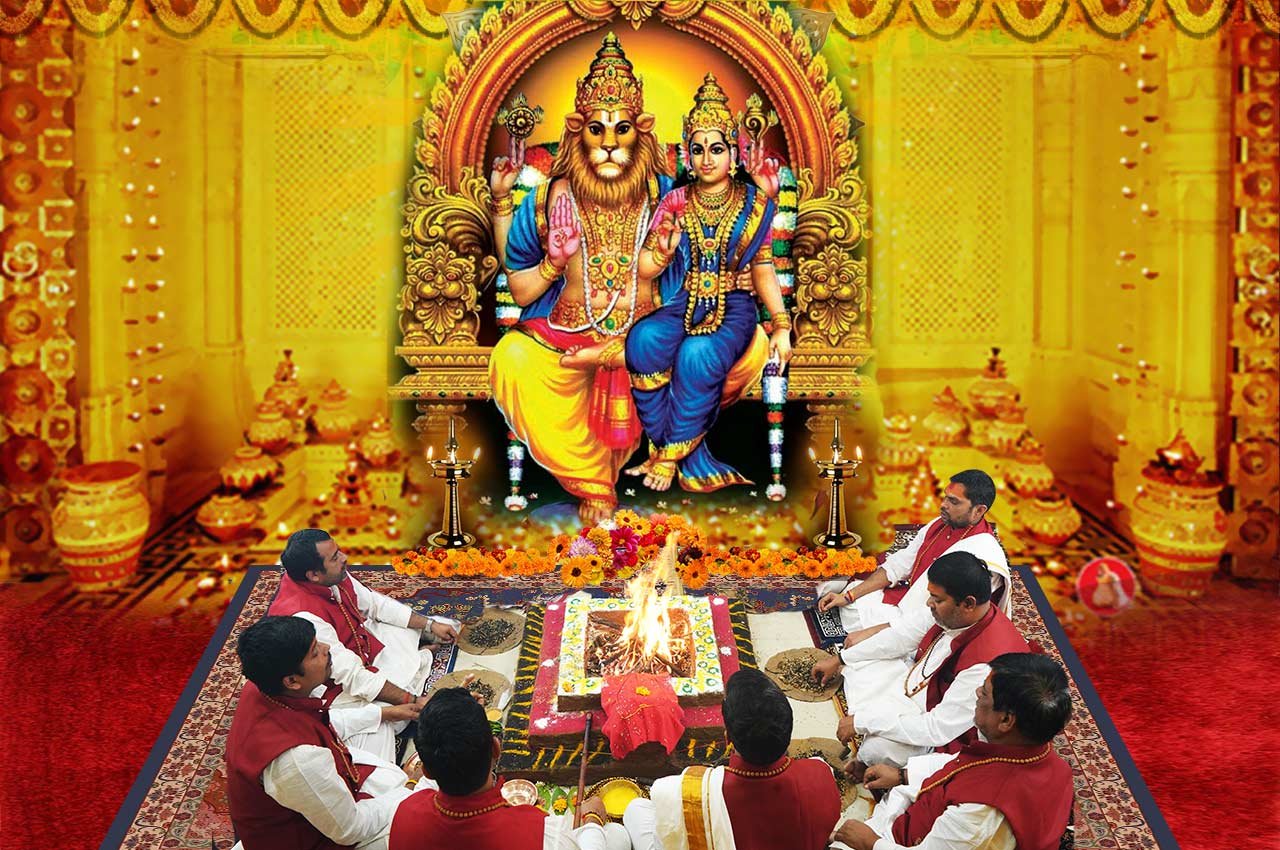Description
PRODUCT DESCRIPTION
About Akhand Ramayan (Ramcharitmanas Paath) | Significance of Akhand Ramayan (Sampurna Ramcharitmanas Paath)
Akhand Ramayan (Ramcharitmanas Paath) is written by Saint Tulsidas which is a poetic representation of the epic ‘Ramayana’ which was written by Sage Valmiki. The word ‘Ramcharitmanas’ literally translates to the ‘Lake of Lord Rama’s Deeds’ and is renowned as one of the finest works in Hindu literature. Being an historical text the Akhand Ramayan (Ramcharitmanas Paath) mentions the tales and triumphs that took place in Lord Rama’s life. He is the seventh incarnation of Lord Vishnu and is known as ‘Maryada Purushottam’, the Supreme Persona. Lord Rama is renowned and venerated as an ideal son, a brother, a friend, a husband and a king. The epic ‘Ramayana’ narrates the life of Lord Rama and the facts and events that took place in His life whereas, Akhand Ramayan or ‘Ramcharitmanas Paath’ is a poetic text that is penned down from a devotee’s view point, glorifying and praising Lord Rama for all His virtues. Shri Ramcharitmanas Path was composed in regional language namely ‘Awadhi’ so that, even a common man residing in the region could recite it and learn about the divine virtues, Lord Rama possessed. The epic Ramayana was written in Sanskrit which only Brahmins of that era could read as common man did not know how to read or write Sanskrit language whereas, the Akhand Ramayan (Ramcharitmanas Paath) soon gained popularity as more people could easily read it because it was an Awadhi Script. The Akhand Ramayan Path introduced people to Lord Rama and His virtuous and righteous way of living thus, establishing a role model and way of living for mankind.
The objective of performing the Akhand Ramayan Path is not only to learn about the life of Lord Rama but to learn and to adapt His qualities and virtues in our life. Performing the Akhand Ramayan Path helps to invite positivity in life and wards of negative energies. It fills life with peace and contentment. The Akhand Ramayan Path benefits the Yajman to lead a successful life. It also blesses the devotee with a harmonious family life and elevates one spiritually. Performing the Shri Ramcharitmanas Path fills life with happiness and offers salvation. It helps to fill the life with Chaitanya and calms the mind and soul. It makes one courageous and offers rational thinking. It rejuvenates the senses and strengthens the bond of trust and love among family.
The Akhand Ramayan (Ramcharitmanas Paath) includes seven chapters, known as Kands. These chapters beautifully describe the various stages of Lord Rama’s life.
The Akhand Ramayan Path (Sampurna Ramcharitmanas Paath) includes the below chapters or ‘kands’:
1. Baalkand: This Chapter of Ramcharitmanas focusses on the childhood of Lord Rama & his brothers, his heroic tales and his marriage to daughter of King Janak also known as Sita Mata
2. Ayodhyakand: This Chapter of Akhand Ramayan or Ramcharitmanas Paath consists of the events that led to Lord Ram’s exile
3. Aranyakand: This Chapter tell us about life of Lord Rama during his exile and infamous abduction of Sita Mata by Ravana
4. Kishkindhakand: This chapter is where Lord Hanuman meets Lord Ram and focuses on the story of Vanar King Bali & his brother Sugreev. Lord Ram helps Sugreev win the battle against King Bali and he in turn sends him an army of Monkeys to rescue Sita Mata from Lanka
5. Sundarkand: This Chapter of Akhand Ramayan (Ramcharitmanas Paath) focuses on the adventures and glories of Lord Hanuman, his journey to Lanka, him being captured by Ravana, his dialogue with Sita Mata and the subsequent burning of the city of Lanka
6. Lankakand or Yuddhakaand: This Chapter of Akhand Ramayan focuses on the Great Lanka War, building of the Ram Setu bridge, Hanuman carrying Mount Sumeru, Lord Ram killing Ravana & Sita Mata’s Agni Pareeksha
7. Uttarkand: This chapter of Akhand Ramayan focuses on the last years of Lord Rama, his brothers & Sita Mata. Sita Maa is banished from the kingdom and lives with Sage Valmiki and gives birth to twins Luv & Kush.
Mere reciting the Akhand Ramayan Paath for 24hours brings auspiciousness in life. It removes all the obstacles and the adversities from life and promotes success. It brings prosperity, stability and fills life with overall bliss.
When to Perform Akhand Ramayan Paath?
Akhand Ramayan path is best performed during Ram Navami, Diwali, Navratri, in times of distress, before going to a new house, or to celebrate any auspicious event.
Benefits of Online Recitation of Akhand Ramayan Path
- It helps to attain the divine blessings of Lord Rama and Lord Hanuman
- Listening to Akhand Ramayan (Ramcharitmanas Paath) helps to reveal the truth,
- It makes one courageous
- The Shri Ramcharitmanas Path motivates one to walk on the path of righteousness
- It offers protection from evil and negative energies
- It safeguards from uneven forces and enemies
- It helps one to achieve His/ Her goals
- The Ramcharitmanas Sampurna Path offers success in professional life and offers name and fame
- It elevates one spiritually
- It offers success in new ventures and new businesses
- It helps to attain the set goals and targets
- It helps to ward off negativity
- It makes one courageous and motivates one to lead a righteous life
- Akhand Ramayan Path is auspicious and is often performed during new beginnings like Griha Pravesh (entering a new house), Marriage ceremonies, Birth of a Child etc.
Shri Ramcharitmanas Path Procedure | Akhand Ramayan (Ramcharitmanas Paath ) Puja Vidhi
Kalash Sthapana, Panchang Sthapana (Gauri Ganesh, Punyavachan, Shodash Matrika, Navgraha, Sarvotabhadra), 64 yogini Pujan, Shetrapal Pujan, Swasti Vachan, Sankalpa, Ganesh Laxmi Pujan and Abhishek, Navgraha Pujan and 108 chants of each planetary mantra, Invocation of major Gods and Goddesses in Kalash, Ram Parivar Abhishek and Pujan, , Tulsi archan with Shri Ram Raksha strotra, Japa of mantra, Ram Charit manas pujan and path, Yagna, Aarti and Pushpaanjali
Akhand Ramayan Paath Mantra:
Ram Siya Ram Siya Ram Jay Jay Ram
Akhand Ramayan Paath Mantra Meaning:
The Mantra glorifies the name of Lord Rama and His consort Maa Sita
No. of Priests: 4 teams of 5 Pundits each
Duration Of Shri Ramcharitmanas Path: Non stop recital for 24 hours (Starts at 11 am and finishes by 11 am next day IST)
Musical Instruments: Harmonium, Tabala, Dholak and small accompanying traditional instruments are used.
How the Akhand Ramayan Path is Done:
- First the sankalp is taken by the person who is authorising this team to sing the Ramayan. Then your Name, birth details, gotra(birth lineage), father’s name, spouse’s name, place and names of pandits who have been authorised by the main yajman(the one who wants this paath to be conducted) are recited in the sankalpa.
- Various Gods and Goddesses are requested to come and seated at the place of recitation. The request is invoked for: Ganesh /Gauri,Navgruh(nine planets), Sixteen mothers(shodus matrukas), sea god(varun), Deepak(fire as witness), Hanumanji and Ram Panchyat to arrive at this place and be there till the paath is over.
- Nyas(various purification rituals) are done using the verses from the Ramayan
- Then, the paath begins with melodious singing as a group and one singer leads the reading:
- There is no stoppage for even one minute to this Akhand Paath, till the end of the scripture.
- Hawan: Using various vedic mantras, Hawan is conducted
- Aarti: All Gods are respected and requested to bless the yajman and all connected within this ritual
- Prasad: Sweets, fruits, dry fruits are offered and distributed to all
- Visarjan: All invited Gods and Goddesses are requested to go back to their main abode after giving their individual blessings.
Special Puja Samagri (Ingredients) Used in Ramcharitmanas Paath
Some common Puja Samagri are used in all pujas like Haldi, Kum Kum, Cotton Wicks, Molly Thread, Abeer, Sindhoor, Akshat Rice, Janeau (Holy Thread), Gangajal (Ganga Water), Kapur (Camphor), Yellow Mustard, Incense Agarbatti, Attar (Fragrances), Dhoop incense, Supari (Betel Nut), Laung Clove, Elaichi (Cardamom), Kamal Gatta (Lotus Seed), Guggal, Altar Cloth, Asan (Pedestal), Kusha Patri (Kusha Ring), Honey, Sugar, Havan Sticks (Mango Stick and Navgraha Sticks Ark for Sun, Palash for Moon, Khadir for Mars, Peepal for Jupiter, Apamarga for Mercury, Audambar for Venus, Shami for Saturn, Durva for Rahu, Kusha for Ketu), Havan Powders & Herbs, Milk, Dahi, Ghee, Panchamrit, Flowers, Fruits, Sweets, Durva, Tulsi, Mango Leaf.
The above list can vary from one Deity to the Other.
The below Puja Samagri List comprises of items which are of special importance for Akhand Ramayan (Ramcharitmanas Paath)
Ram Raksha Yantra (At Chakara Yog Puja Services every Puja has a specific yantra which is sent in puja prasad)
Yellow Clothes,
Tulsi Mala
Tulsi Leaves
Kandamool Fruit
Banana Fruit
Banana Stem
Banana Flowers
Akhand Sriphal
Kheer
Tulsi garland
Parijaat (Night-flowering Jasmine or Coral Jasmine) flowers
Aate ki Panjiri (Sweet made of flour)


